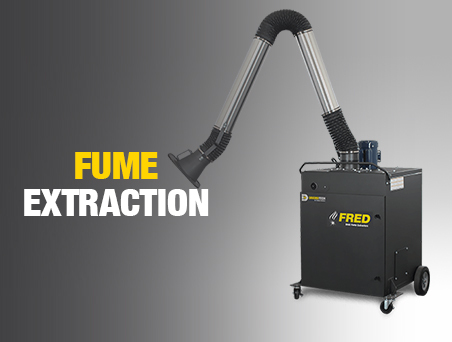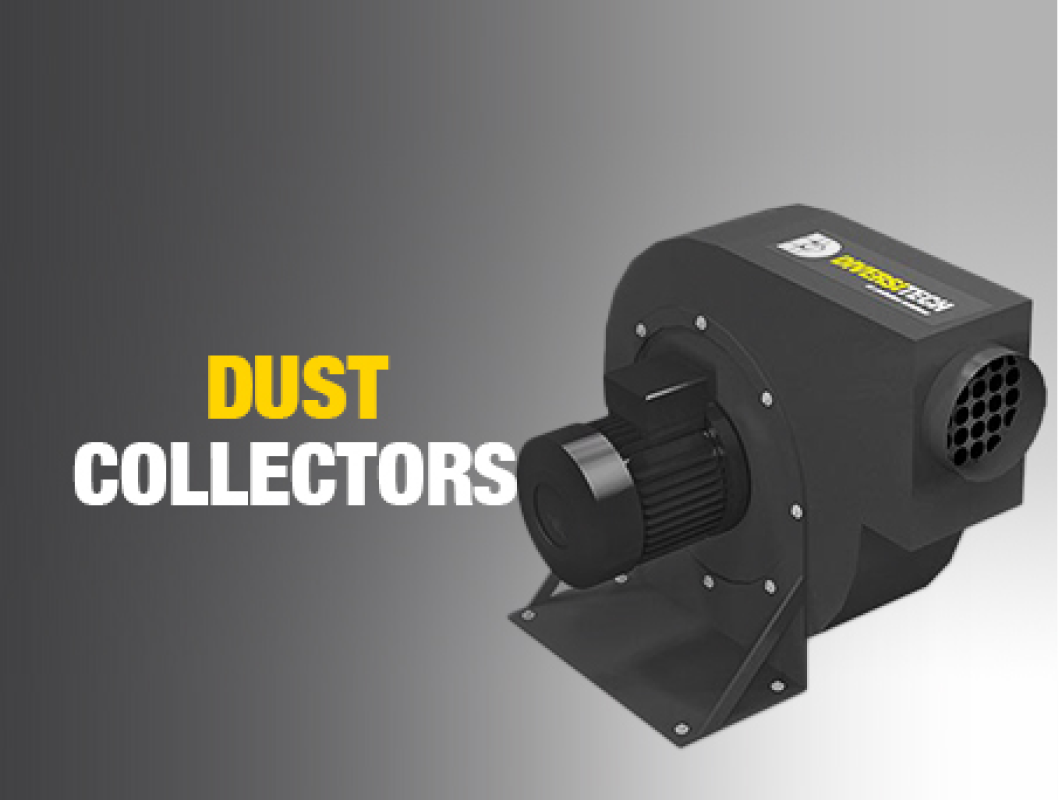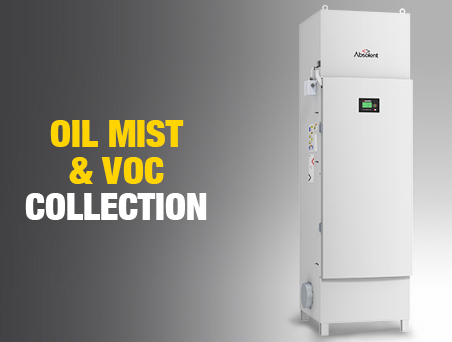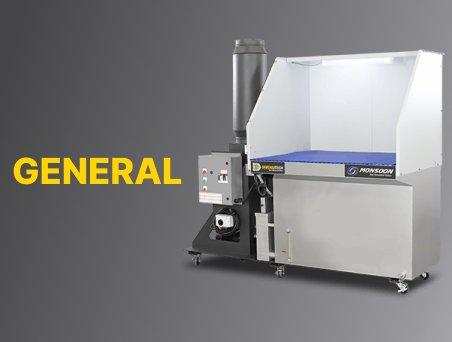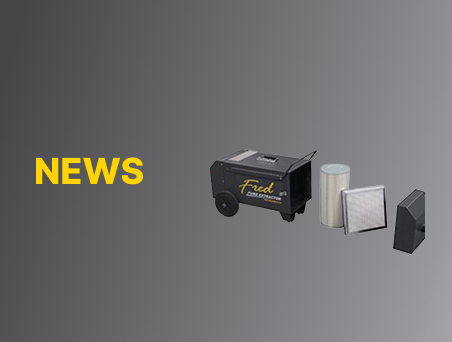Powders, pigments, sprays, and lacquers- all of these and more come to mind when the term “cosmetics” is used. In manufacturing, even some hygiene items like dental care and deodorants fall under the “cosmetic” umbrella. With that in mind, most people don’t give a second thought to the safety of their cosmetic and personal care products- after all, they should be safe to use.
Although cosmetics may seem like the last place where you’d be likely to find toxic fumes, hazardous dusts, and carcinogens abound, the truth is that there are some serious health risks behind all of the glitter and gloss.
In today’s article we’ll be giving an overview of the health risks associated with dusts and fumes in the cosmetics industry– and Diversitech’s solutions to help mitigate health hazards, including downdraft tables and fume extractors.
Common Dusts in the Cosmetic Industry
When it comes to cosmetics, nearly every product you can find has a powder version. It should be no surprise then that cosmetics manufacturing is rife with dusts, each with their own set of corresponding safety concerns.
Mica and Talc
Mica and talc are some of the most common powders used in cosmetics- particularly makeup. They can be found in most pressed powder foundations, loose setting powders, powder blushes, bronzers, and so on. They are used for their oil-absorbing properties to give the skin a more natural finish and to keep makeup from unintentionally transferring. While these powders are not without their purpose in cosmetics, they are also not without their hazards. Mica and talc are both known to be toxic when inhaled, resulting in severe respiratory problems with exposure over time. Mica is known to cause lung scarring, and talc has been linked to cancer- in part due to being commonly contaminated with asbestos.
Cosmetic Pigments: Carbon Black, Chromium, and Cadmium
Pigments are the driving force behind makeup, nail polish, and hair color as we know them today. These pigments are typically used in powder form. Carbon black, aptly named, uses carbon in its powder form to imbue a dark black color to cosmetics like mascara, eyeliner, nail polishes, lipsticks, and more. Although research is ongoing, there is evidence which suggests that there may be a link between breathing carbon black powder and developing respiratory and cardiovascular diseases.
Chromium and cadmium are heavy metals which are also used as pigments- cobalt blue and bright red, respectively. These metals are both known carcinogens, and respiratory exposure to them has been linked to lung cancer. OSHA regulates a permissible exposure limit, or PEL, of chromium at 5µg/m3 over an 8 hour period and cadmium at 2.5µg/m3 over an 8 hour period.
Table of Contents:
Aluminum
Powder aluminum is an active ingredient in many antiperspirants and deodorants and is also used as a colorant in other cosmetics. Elongated exposure to aluminum dust may lead to neurological issues like Alzheimer’s Disease and neurotoxicity. It can also contaminate the bloodstream to cause organ-system toxicity and hormone disruption.
Particulate Matter & Microplastics
Nearly all powders used in cosmetics can fall under the umbrella of “particulate matter” but in this case we want to address substances that don’t fall in any other category- glitter, for example. Glitter is a microplastic- a classification of plastics which is detrimental to the well-being of people’s health and the environment alike. When inhaled and even when on the skin, glitter flecks can cause microdermabrasion: micro-scale tears on the skin, which may become infected. This can be especially detrimental to the lungs and lead to scarring.
Diversitech’s air pollution solutions can help reduce the risk of exposure to toxic ingredients in cosmetics manufacturing. Contact us to learn more about our downdraft tables, downdraft booths, and fume extractors today!
Dust Collection in Cosmetic Manufacturing
Despite the importance of dust collection, implementing effective dust control measures in the cosmetics industry can be challenging. The dust generated in this industry is often very fine and can easily become airborne. Moreover, some types of dust can be combustible, posing a risk of fire or explosion. Therefore, the dust collection system used must be able to effectively capture and contain these dust particles, while also ensuring the safety of the workers and the facility.
Dust Collection for Cosmetic Batch Mixing
Cosmetics are produced in batches, both big and small. Batch mixing releases powder products and dusts into the surrounding air, so a proper dust collection unit is highly recommended for use with batch mixing operations. Such a unit plays a pivotal role in effectively capturing and containing these airborne particles, ensuring a safe and clean working environment. Our cartridge dust collectors are ideal for extracting dust from the ambient air.
Dust Collection for Pressed Powder Manufacturing
Many powders are manufactured in a “pressed” form, in which the powder product is tamped with a powder compacting tool. Although the occurrence of dust release may be limited in terms of quantity, it is crucial to recognize the potential risks associated with prolonged exposure to these dust particles, as they can pose significant health hazards to individuals exposed to them.
Dust Collection for Packaging Cosmetics
After powder cosmetics have been mixed and pressed, the packaging process can result in exposure to hazardous dusts as well. Any mishandling or neglect during the packaging phase can inadvertently release these dust particles into the air, endangering the health and safety of the workers involved. Employing the proper measures and precautions is crucial to ensuring the well-being and protection of individuals in the packaging unit.
The Importance of Fume Extraction in Cosmetics
While dusts are incredibly prominent in the cosmetic manufacturing industry, many products and processes also emit toxic fumes. Many of these fumes are known carcinogens, so proper fume extraction is integral to protecting the safety of manufacturing personnel.
Formaldehyde in Cosmetics
Formaldehyde is a surprisingly common ingredient in cosmetic products, commonly used as an antimicrobial agent in water-based products. While formaldehyde does indeed have the intended effect of an antimicrobial additive, it is also a volatile organic compound (VOC) known to cause major respiratory problems when inhaled. Repeated exposure has been linked to conditions like leukemia, brain cancer and tumor formation. Like cadmium and cobalt, formaldehyde exposure is regulated by OSHA at 0.75ppm over an 8 hour period.
Benzene Propellants in Spray Products
Many spray products in the cosmetics industry are delivered in aerosol cans, with isobutane acting as the propellant which forces product out of the can. While isobutane on its own is not necessarily harmful, it is commonly contaminated with benzene- which studies have suggested may be linked to leukemia and blood cell production issues after prolonged exposure.
Dust Collection & Fume Extraction in the Cosmetics Industry
There are several dust extraction solutions available that can effectively address the dust collection needs of the cosmetics industry. These include:
Ambient Dust Collectors
Ambient dust collectors play a crucial role in improving safety in the cosmetics manufacturing industry. These devices are designed to capture and remove dust particles from the air, thereby reducing the risk of dust-related hazards such as respiratory issues, allergic reactions, and fire hazards. By effectively controlling dust at the source, ambient dust collectors prevent dust from becoming airborne and contaminating the production environment. This helps create a safer work environment for employees by minimizing their exposure to potentially harmful dust particles.
In addition to improving air quality and safety, ambient dust collectors also contribute to maintaining product quality. Dust particles can settle on cosmetic products and packaging materials, leading to product contamination and compromising their quality. By removing dust from the air, ambient dust collectors help ensure that cosmetics are manufactured in a clean and dust-free environment, reducing the likelihood of product defects or customer complaints.
The use of ambient dust collectors in the cosmetics industry is essential for maintaining a safe and hygienic manufacturing environment, protecting the health of employees, and ensuring the production of high-quality cosmetic products.
Downdraft Tables
Downdraft tables are an effective dust collection solution in the cosmetics industry, helping to improve air quality, protect product quality, and ensure the safety of employees. The use of downdraft tables helps to prevent dust from becoming airborne and spreading throughout the production environment. This is important for maintaining a clean and dust-free workspace, which is crucial in the cosmetics industry to avoid product contamination and ensure the quality of the final products. Downdraft tables also contribute to the safety of employees by minimizing personnel’s exposure to dust particles. By capturing the dust at the source, these tables help to reduce the risk of respiratory issues and allergic reactions that can be caused by inhaling dust.
Fume Extractors
Fume extractors play a crucial role in mitigating respiratory health hazards in a cosmetics manufacturing facility. These devices are designed to capture and remove hazardous fumes and gases that are generated during various manufacturing processes as we’ve previously discussed.
By effectively capturing and removing these fumes, fume extractors help to prevent employees from inhaling harmful substances, reducing the risk of respiratory issues and allergic reactions. They also contribute to maintaining a clean and safe working environment by preventing the accumulation of toxic fumes.
Fume extractors typically use filters or other purification methods to remove harmful particles and gases from the air. These filters can trap a wide range of contaminants, including volatile organic compounds (VOCs), chemical fumes, and other hazardous substances commonly found in cosmetics manufacturing.
In addition to protecting employees’ respiratory health, fume extractors also help companies comply with health and safety regulations. Many regulatory agencies require the use of fume extraction systems in industries where hazardous fumes are generated to ensure the well-being of workers.
Dust collection and fume extraction in the cosmetics industry are both critical aspects of safety and quality control that should not be overlooked. By implementing effective air quality control measures, companies can ensure the quality of their products, maintain a clean and safe working environment, and comply with health and safety regulations. Whether it’s dust collectors, fume extractors, or downdraft tables, Diversitech houses a variety of air pollution solutions to meet the unique needs of the cosmetics industry.
Contact Diversitech today to learn more about our air quality management measures designed specifically to combat particulate matter and VOCs in your industry!
- Topics:Dust Collectors, Fume Extraction
Related Products
Oil Mist Collectors

The Absolent A•erity family carries advanced oil mist filters that are best suited for CNC machining, grinding, and forming/pressing machines that are running high RPM and high coolant pressure.
FRED SR
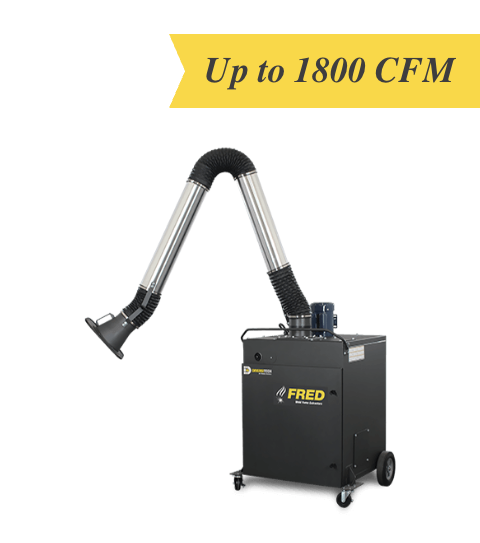
The industry standard for eliminating smoke, dust and fumes, the FRED Sr. is a professional grade fume extractor.
Wet Downdraft Table

TYPHOON WX


